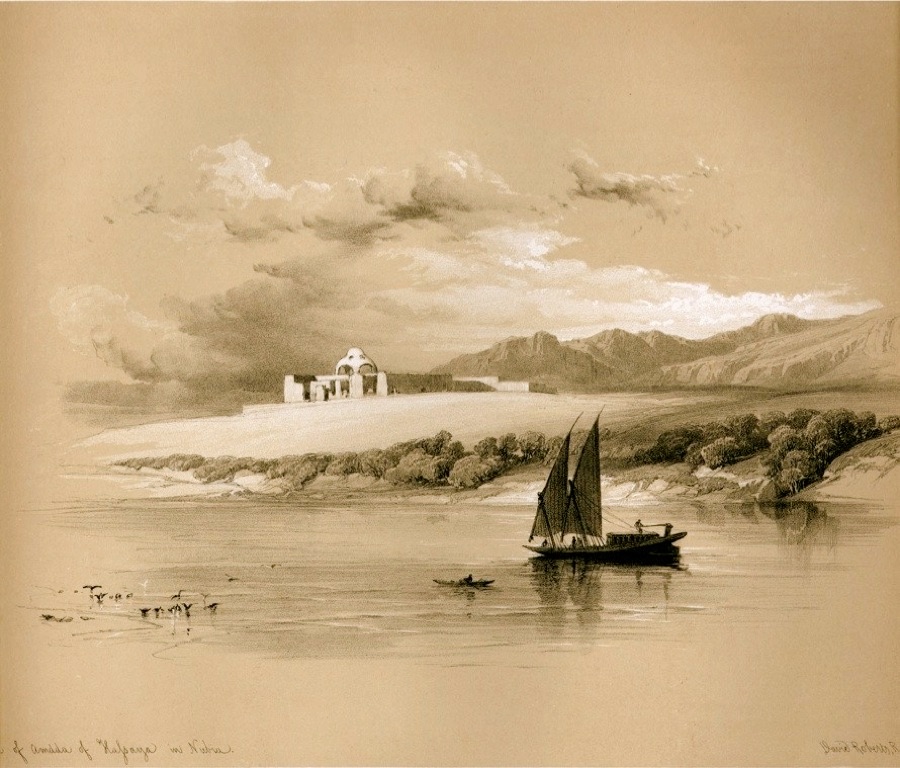TEMPLE OF A'MADA AT HASSAIA, NUBIA.
IN this small Temple are seen the names of the third Thothmes, together with that of his son Amunoph II., and his grandson Tothmes IV., that of Osirtasen III. has also been found. The colours of the painted sculptures are in remarkable preservation, which is due, probably, to the means which were employed to obliterate them; for the early Christians, when they used the ancient temples as churches, overlaid these representations with plaster, to efface all traces of idolatry, and thus preserved the painting which is now restored. A portico, a transverse corridor, and three inner chambers, constitute the whole of this elegant little Temple. It is now half buried in sand. The sanctuary is entire, and its walls, as well as those of the two lateral apartments with which it communicates, are covered with small and beautifully executed hieroglyphics: which, though slightly raised, are still sharp, and the colours so remarkably preserved that they might be transferred to paper. The pronaos is supported by square pillars covered with hieroglyphics so inferior to those in the adytum that no doubt can exist that they were executed at different periods.
Above the pronaos is a clumsy mud dome, utterly out of character with the building, and, most probably, added when the Temple was adopted as a Christian church. The remains of an ancient town, amidst which the Temple appears to have stood, can be traced, and it probably lies buried in the sand which has here so greatly accumulated. Not far from this arid site of the Temple of A’mada the Nile is bordered with vegetation and groves of palm trees; and the sandy soil beyond is relieved by highly picturesque forms of the Libyan mountains.
Wilkinson’s Egypt and Thebes. Roberts’s Journal.


